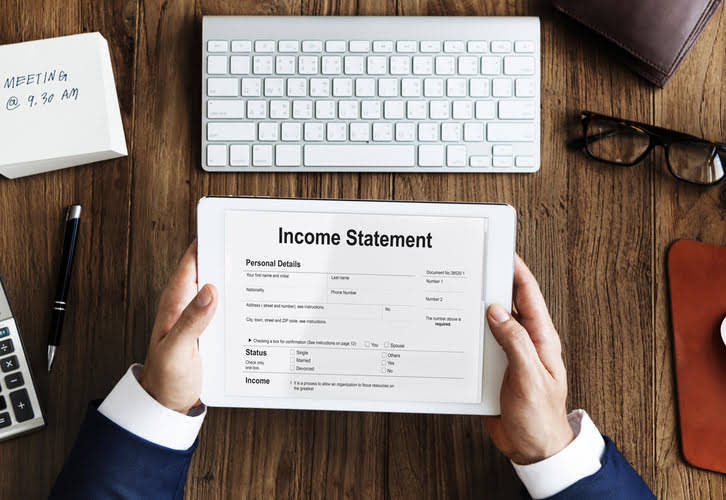Best Practices for Successful Accounting as a Restaurant

With a certified bookkeeper designation, you are qualified to perform all critical functions through the adjusted trial balance and basic payroll for small to medium-sized businesses. Integrity and trustworthiness are important qualities to cultivate as a bookkeeper. Keep an organization’s financial data confidential and be transparent about your bookkeeping activities. Managing the general ledger is part of your daily responsibilities as a bookkeeper.
- Restaurants tend to employ a mix of hourly and salaried workers, some of which are seasonal, and hourly workers often make both a wage and tips—the latter of which can go underreported.
- That’s because there are liability issues and high penalty fees on the line for mistakes made in payroll.
- When integrated with POS and accounting systems, payroll software automatically ensures that staff rosters are up to date—including any late changes or no-shows—and that tips are recorded accurately.
- These financial snapshots give you the power to take action, in real-time with minimal effort.
- It also demands a firm grip on your finances, ensuring that your financial transactions are logged at the end of each day.
What Is The Cost of Goods Sold in a Restaurant?
Please make sure you have a point-of-sale system that integrates with that software. In contrast, variable costs fluctuate with your restaurant’s activity, including ingredients and labor. A balance sheet provides an overarching view of your restaurant’s financial health. By listing your assets, liabilities (debt) and equities at a given point in time, you’re presented with a snapshot of your restaurant’s net worth. This gives you an understanding of your current financial situation and lets you plan your short and long-term cash flow. The best restaurant accounting software addresses the intricacies of restaurant operations and back office management, such as inventory taking, cost management, and employee scheduling.
Record Retention Guidelines
This calculation serves as a valuable metric to gauge your operational efficiency and establish appropriate menu prices. While the average food cost percentage for restaurants typically falls between 28% to 32%, it’s important to note that variations may occur based on your specific type of cuisine and service model. Effective cash flow management involves monitoring cash inflows and outflows, optimizing payment terms with suppliers, and forecasting future cash needs. By staying on top of cash flow, restaurant owners can avoid liquidity issues and ensure the smooth operation of their businesses. It’s best practice to reconcile accounts payable before inputting invoices into your accounting software. To do this, you can try a process called the “Three-Way Match.” To begin, view your restaurant’s purchase order, then the receiving order, and lastly, the vendor invoice.

Social services resume samples (

Keep a meticulous record of your stock levels and update it regularly. Effective inventory management helps prevent waste, control costs, and ensures you have the necessary how to do bookkeeping for a restaurant ingredients and supplies to meet customer demand. As your business grows, so will the complexity of your accounting systems—and usually, that happens pretty quickly.
Every employee has a record of their pay, which is included in year-end reports and other financial statements. Bookkeepers are more task-based and manage accounts payable, payroll, and posting journal entries. Hiring a bookkeeper often proves a game-changing choice for restaurant owners, as it often means they can get some sleep rather than spending all night crunching numbers after dinner service. Many restaurant owners opt to outsource bookkeeping, or at least the payroll element as described above. This report helps restaurant leaders understand how much of each ingredient they’re using versus how much they should be using based on the restaurant’s recipes, in terms of both cost and quantity.
Use accounting software
For example, imagine that the system recognizes that a particular ingredient is growing more expensive. If the owner chooses to continue spending on the ingredient and wants to cut staffing costs to compensate, they can trim staff hours directly in the system. These day-to-day transactions must be logged accurately, because they form the basis of financial statements and financial reports that guide business strategy and profitability. Restaurant bookkeeping may sound intimidating, but employing a bookkeeper and/or the appropriate restaurant accounting software can lighten the load. As the name suggests, bookkeeping used to be done primarily in physical journals and ledgers, with teams spending hours or days ensuring that every cent was accounted for in individual books.
What if your accountant could help you make your business more profitable?
- The chart of accounts is often used as the source of truth for a restaurant’s finances and helps to inform other financial documents, such as balance sheets, profit and loss statements, and cash flow statements.
- As you grow you will have to continually modify your bookkeeping system to meet your needs.
- Restaurant owners need to track when a bill is received, when it’s due, and whether it gets paid on time.
- “Earnings before interest, taxes, depreciation and amortization” is used by restaurateurs, investors, and financiers as a proxy for cash flow.
- You need to reconcile all your bank accounts every month to ensure your bank statements and financial records are accurate, and you have a realistic view of your financial performance.
Regardless of your experience in the restaurant business, there’s always room for improvement. Now, we’re going to take a look at restaurant accounting basics as well as some factors that are specific to restaurant accounting. Every restaurant has overhead, or fixed costs of running your business, such as rent, insurance, and equipment rental. This ratio can be calculated on an hourly, daily, or monthly rate, and will give you insight into how much your restaurant costs to run. Restaurant accountants are trained to compile data precisely and purposefully.
Financials you should watch
By keeping tabs on your CoGS ratio, you can take action to reduce and contain your inventory costs. Restaurant accounting is also made up of essential bookkeeping processes that keep your business running. While you’ll most likely hire an accountant or bookkeeper to handle most of these processes, here’s what you need to know so you’re at least speaking the language. While you won’t leave this article a chartered accountant, we’ll give you the language you need to work with accountants and with restaurant accounting software. In other words, we’ll help you talk the talk, but you’ll still need someone to walk with.

-

 Youtube7 meses ago
Youtube7 meses agoComo Ganhar Dinheiro com Google AdSense no YouTube: Dicas e Estratégias
-

 Youtube7 meses ago
Youtube7 meses agoA Melhor Estratégia para Monetizar Canal que já v: Como Ganhar Dinheiro com seu Canal no YouTube
-

 Aplicativos Gratuitos7 meses ago
Aplicativos Gratuitos7 meses agoComo Sacar o FGTS pelo Aplicativo: Passo a Passo Fácil e Rápido
-

 Aplicativos Gratuitos6 meses ago
Aplicativos Gratuitos6 meses agoBíblia sagrada narrada – Como baixar o aplicativo
-

 Aplicativos Gratuitos6 meses ago
Aplicativos Gratuitos6 meses agoGanhar dinheiro com Kwai postando vídeo – Descubra como aumentar sua renda
-

 Aplicativos Gratuitos6 meses ago
Aplicativos Gratuitos6 meses agoAplicativo de filmes grátis igual Netflix – Como baixar: Guia completo
-

 Aplicativos Gratuitos6 meses ago
Aplicativos Gratuitos6 meses agoAplicativo de Orações Diárias: Encontre Paz e Reflexão em seu Dia-a-Dia
-

 Inicio6 meses ago
Inicio6 meses agoComo avaliar as roupas da Shein e ganhar dinheiro